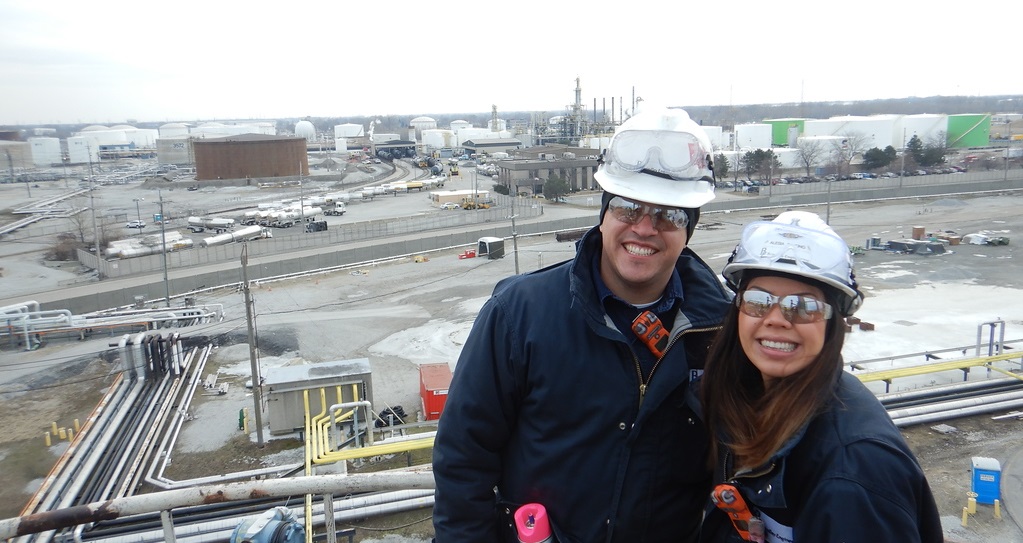Aboveground storage tanks (ASTs) are vital to many industries. In Brindley Engineering’s world, they are ubiquitous in the industries we work in. Aboveground storage tanks hold hydrocarbons, agricultural products, water, chemicals, waste products, and many other products. They are generally continuous in operation and require scheduled maintenance and reliability. When aboveground tanks fail, it can be detrimental to production, the environment, and the community. Welcome to Part 6 of Brindley Engineering’s 10-part series on Infrastructure Reliability. In Part 5 we explored Piping and CUIs. Part 4 we wrote about level instrumentation. In Part 3 we explored electrical reliability. In Part 2 you read about process utilities, and in Part 1 we wrote about the risk of neglective critical infrastructure and protecting what matters. In Part 6 we will talk about Tank Reliability and ASTs.
Common Causes for Aboveground Tank Failures
Despite following guidelines and standards on how ASTs are designed, managed, and monitored, tanks can still succumb to failures and damages. Settling and buckling are two common behaviors that can occur on ASTs and if not accessed, they are subject to failure. Common causes of shell buckling include vacuum pressure, wind pressure, external forces, uneven settlement, and inappropriate welding processes. Common causes of settlement include lack of support under the base circumference (e.g., deteriorated concrete ring), voids or crevices of soil deposit below the bottom plate, non-uniform distribution of load applied to foundation, poorly constructed foundations (e.g., bad quality cement, deficient reinforcement of concrete), and other reasons.
Tank Assessment Guidelines
Brindley Engineering has been involved in several tank assessments that experienced settling and buckling to determine if these ASTs can remain in service or if repairs were needed prior to placing them back into service. Many ASTs follow the standard API 653 “Tank Inspection, Repair, Alteration, and Reconstructions” to evaluate suitability for service. Alternatively, API 579 Fitness for Service can be referenced to supplement API 653 guidance to evaluate the fitness for service of an AST undergoing settlement and buckling and even used to gauge remaining life and potential future failures, such as from buckling.
BE The Solution
In a recent Brindley Engineering project, API 579 was used to determine whether a 36 ft. high, 12 ft. diameter AST was fit for service due to severe pitting. The pitting was categorized as Class 4 by API 653 and API 579 standards. It was determined that an API 579 Level III requiring three-dimensional nonlinear finite element analysis was required to properly determine the remaining life of this tank since the worst-case pit may not have been measured. Structural static finite analysis and buckling analysis were performed for the “as-built” condition assuming no corrosion, pitting, or metal loss. This was then compared to the analyses on the current condition, before repair, using the measured data of the shell thicknesses after corrosion and metal loss.
To estimate the remaining life of the structure, smaller thicknesses were used for the steel plates and the same analyses were performed until failure occurred. The thickness where failure occurred was considered the minimum thickness, which was used in combination with probable corrosion mechanisms, to determine the corrosion rate and when the tank needed replacement or repairs. The analyses and data also indicated metal loss was proportional to elevation and where buckling may occur on the tank.
BE The Result
This example does not only apply to API tanks. Brindley Engineering has performed FEA analysis on non-API 650 tanks, such as a Fiber-Reinforced Plastic (FRP) tank under ASME RTP-1, “Reinforced Thermoset Plastic Corrosion Resistant Equipment” for stationary vessels, to ensure structural integrity of the tank due to additional external forces, e.g., nozzle additions to the roof. We ensure the analysis and the design align with the code requirements and provide additional information to aid with installation if requested (design drawings, welding procedures, reinforcement details, redlined drawings, etc). Given data, analyses, and evaluation, BE can provide appropriate recommendations that account for the client’s operational needs and requirements.




More From This Series:
- Part 1: Infrastructure Reliability – Protecting What Matters
- Part 2: Utilities – Water quality and the effects of impurities on on-stream operability
- Part 3: Electrical – Condition evaluation of critical motors, transformers, and UPS systems
- Part 4: Instrumentation – Level instrumentation and its effects on reliable operation
- Part 5: Piping – Loss of primary containment caused by poor pipe routing
- Part 7: Structures – Structural degradation and the risk of systemic collapse
- Part 8: Fireproofing – Fireproofing degradation, fire safety and corrosion of underlying steel
- Part 9: Cooling Towers – Collapsed cells and effects on cooling water availability
- Part 10: Project Controls – Understanding the big picture in real-time



0 Comments